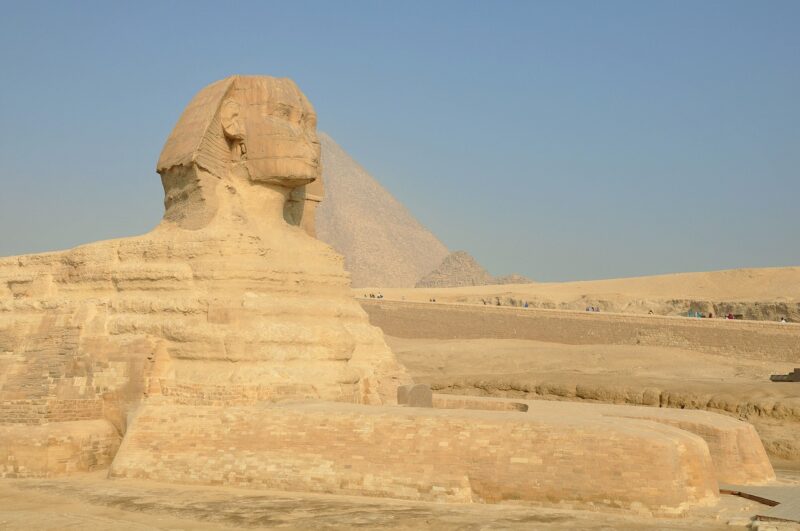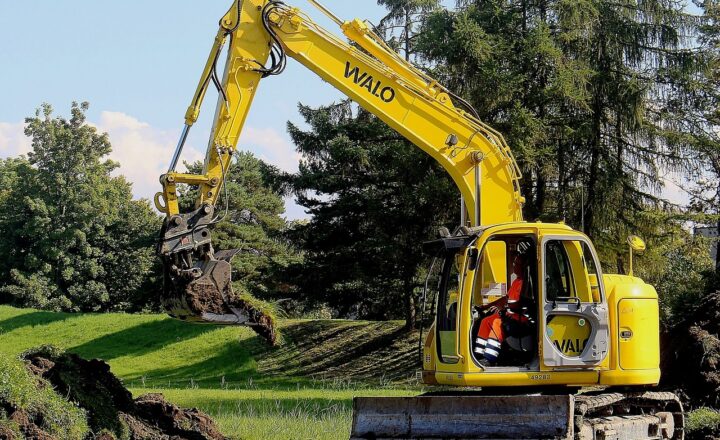The Great Sphinx of Giza: Could It Be Hiding a Secret Chamber?
November 12, 2024

The Great Sphinx of Giza, one of the most iconic symbols of ancient Egypt, has captured the imagination of historians, archaeologists, and tourists alike for centuries. With its lion’s body and human head, the Sphinx stands watch over the Giza Plateau, a silent sentinel to the passage of time. However, beneath the majestic stone façade lies a mystery that has sparked numerous theories and debates: could there be a hidden chamber concealed within the structure of the Sphinx?
1. Historical Context: Understanding the Sphinx
The Great Sphinx, dating back to approximately 2500 BC during the reign of Pharaoh Khafre, is a monumental sculpture carved from limestone. With an impressive height of about 20 meters and a length of 73 meters, it is believed to be the largest monolithic statue in the world. The Sphinx’s purpose has long been a subject of discussion among Egyptologists. Some believe it served as a guardian figure for the nearby pyramids, while others assert it embodies the pharaoh himself, acting as a bridge between the divine and the mortal.
Despite its grandeur, the Sphinx has suffered extensive erosion over the millennia, leading to various restoration efforts. However, it is not merely its physical appearance that intrigues scholars; it is the possibility of undiscovered chambers and tunnels within its colossal form that continues to stir curiosity.
2. The Mystery of Hidden Chambers
Recent advancements in technology have allowed archaeologists to explore new theories regarding the potential existence of hidden chambers within the Sphinx. There are several reasons why this mystery has captivated researchers:
- Historical References: Ancient texts and inscriptions suggest that the Sphinx may have hidden tunnels or chambers. Some legends speak of secret passages that lead to undiscovered treasures or knowledge.
- Geophysical Investigations: In recent years, non-invasive geophysical techniques such as ground-penetrating radar (GPR) and thermal imaging have been employed to scan the Sphinx and its surrounding area. In 2018, a team of Japanese researchers reported detecting anomalies in the vicinity of the Sphinx, hinting at the possibility of hidden voids beneath the monument.
- Speculations by Renowned Egyptologists: Notable figures in the field have posited theories about the existence of chambers. Dr. Mark Lehner, a leading archaeologist, has suggested that if the Sphinx is indeed a spiritual guardian, it may possess hidden passages that facilitate journeys to the afterlife.
As each exploration generates new findings and clues, the possibility of hidden chambers remains tantalizing.
3. The Science Behind the Search
The use of cutting-edge technology has revolutionized archaeological practices. Here’s how modern techniques are aiding in the search for hidden chambers in the Sphinx:
- Ground-Penetrating Radar (GPR): This method transmits radar pulses into the ground to detect anomalies. GPR has revealed possible voids around the Sphinx, though detailed analysis is required to confirm their nature and extent.
- Thermal Imaging: Techniques using thermal imaging cameras can show temperature variations that might indicate hidden spaces behind stone walls or structures. This technology could provide insight into the internal architecture of the Sphinx.
- Magnetometry: This technique measures variations in magnetic fields which can suggest the presence of buried artifacts or chambers. By mapping the magnetic field of the Sphinx’s surroundings, archaeologists can identify areas worthy of further investigation.
This convergence of technology and archaeology is a testament to the robust efforts being made to unravel the mysteries of this iconic monument.
4. Previous Discoveries and Excavations
The search for hidden chambers is not a new endeavor. Over the years, many excavations and explorations have taken place around the Sphinx. Here are notable discoveries:
- The Sphinx Temple: Directly in front of the Sphinx lies the Sphinx Temple, an intricate structure that features massive blocks of limestone and was likely used for rituals. Its existence supports the idea that the Sphinx served a ceremonial purpose, which could correlate with hidden spaces associated with spiritual practices.
- Surrounding Pits and Burial Sites: Excavations have uncovered numerous pits and burial sites nearby, indicating that the Sphinx area was a significant religious center. Moreover, these findings might hint at more extensive interlinked chambers ranging further than initially assumed.
- Correlations with Other Monuments: Some scholars have noted alignments between the Sphinx and other nearby monuments, including the pyramids of Giza. This suggests a grander architectural plan which could entail undiscovered structural elements beneath the surface.
These past efforts reveal that while some progress has been made, the full extent of the Sphinx’s secrets may still lie beneath the sands of time.
5. Controversy and Skepticism
Despite continued interest in the Sphinx and the temptation to find hidden chambers, skepticism surrounds the potential for undiscovered spaces:
- Tourism Impact: Some critics argue that exposing hidden chambers could lead to increased tourism and commercialization, which might undermine the integrity of the archaeological site. Protecting the Sphinx’s sanctity is a priority for many preservationists.
- Scientific Validity of Findings: While many studies suggest the presence of hidden chambers, verifying these findings through traditional excavation methods remains a challenge. The debate about the reliability of modern technology persists within the scientific community.
- Openness to Interpretation: Some scholars emphasize that definitive conclusions about hidden chambers may lead to more questions than answers. The Sphinx has held its secrets for thousands of years, and interpreting its mysteries remains as much an art as it is a science.
The differing viewpoints contribute to the ongoing discourse regarding the Sphinx and how best to approach its study and exploration.
Conclusion: The Enigmatic Legacy of the Sphinx
The Great Sphinx of Giza remains a symbol of ancient mystery. As researchers continue to probe its depths with high-tech tools and traditional methods, the possibility of hidden chambers tantalizes both scholars and enthusiasts. Each exploration brings us closer to understanding not only the Sphinx’s purpose and origins but also the civilization that built it.
Though many questions linger, the quest to uncover the secrets hiding beneath the limestone will persist, driven by humanity’s insatiable curiosity and desire to connect with the past. Will future breakthroughs confirm the existence of hidden chambers? Only time and continued investigation will tell, but one thing is certain: the Great Sphinx will continue to hold its secrets for many generations to come.
A lasting legacy of the ancient world, the secrets of the Sphinx beckon to those brave enough to unlock history’s door. Its embrace of the unknown inspires us all to delve deeper into the mysteries of our world.






